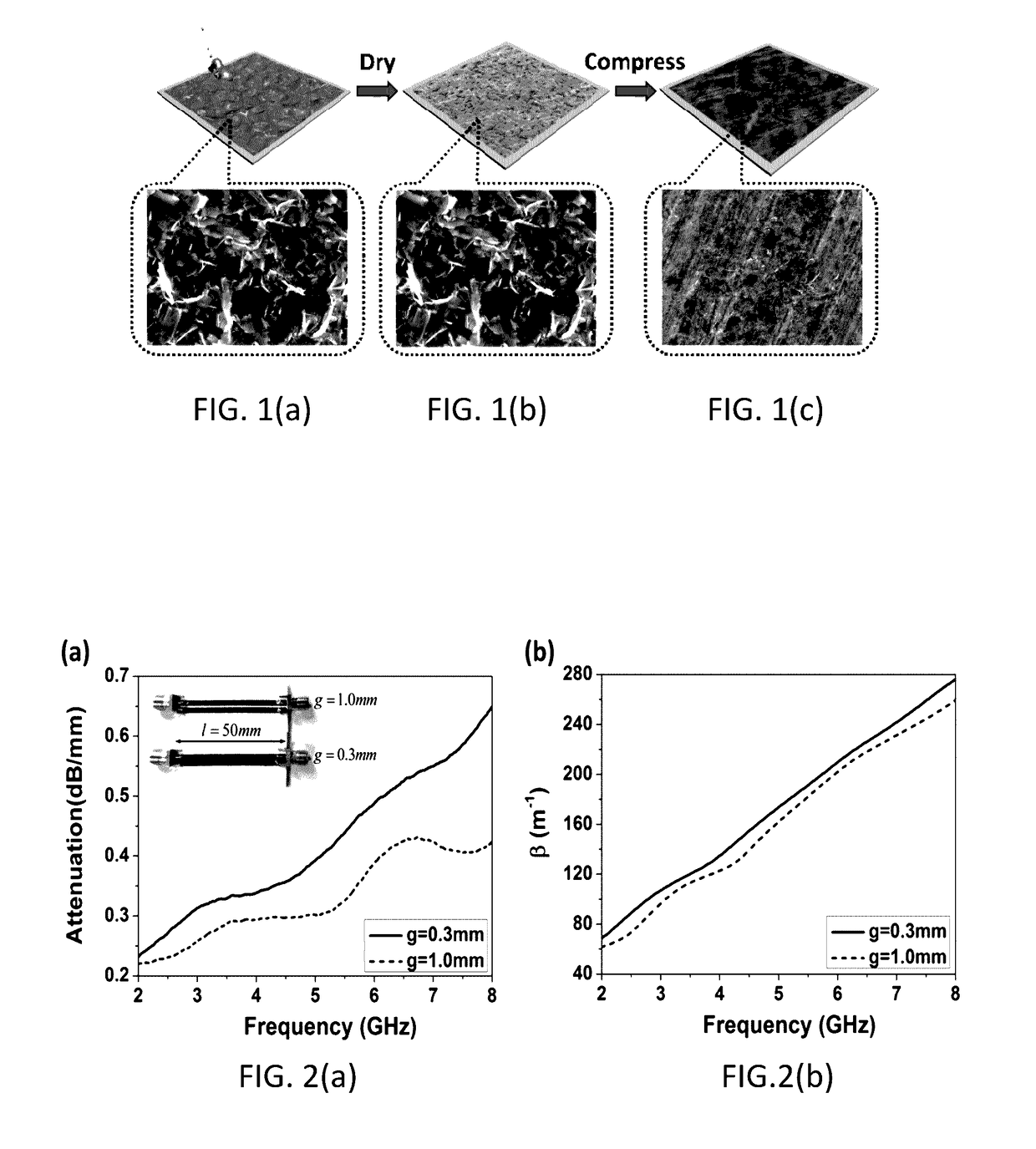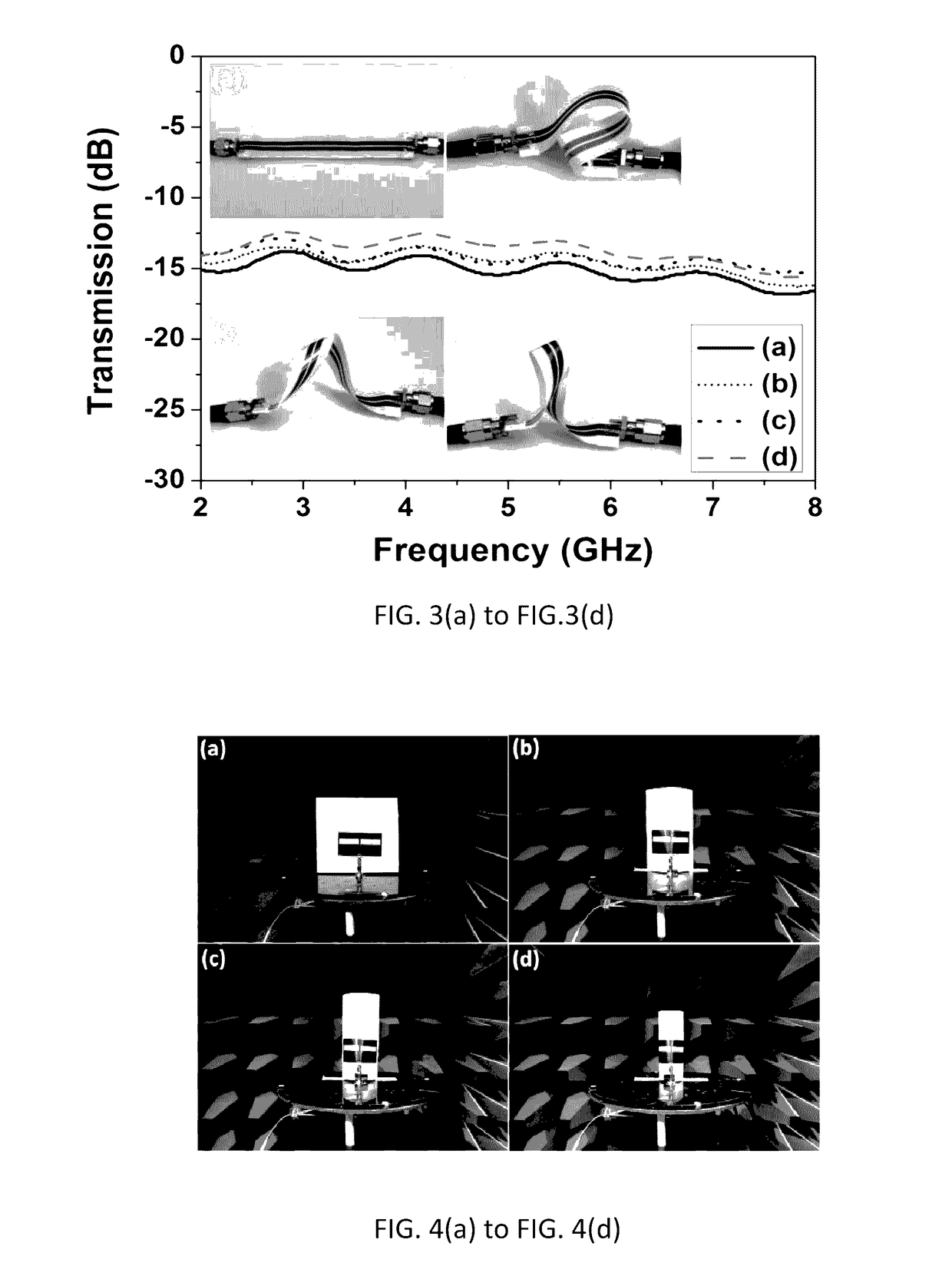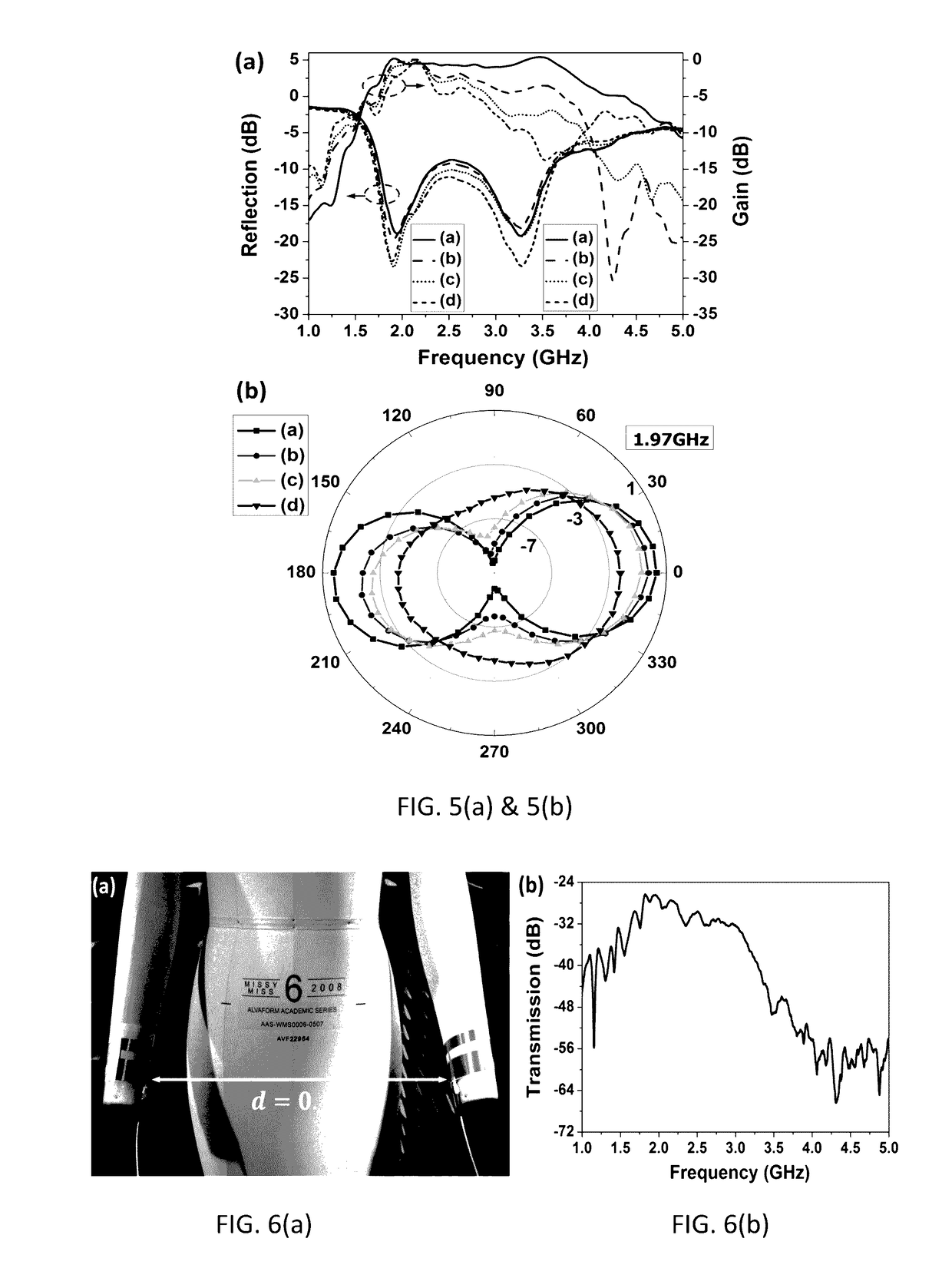Method of Making Highly Flexible and Conductive Printed Graphene-Based Laminate for Wireless Wearable Communications
a technology of printed graphene and wearable communications, applied in the direction of printed circuit aspects, dielectric characteristics, laminated circuit boards, etc., can solve the problems of inability to mass deploy low-cost wireless wearable applications, complex fabrication procedures and materials, and inability to meet the needs of low-cost wearable applications, etc., to achieve high conductivity and mechanical flexibility.
- Summary
- Abstract
- Description
- Claims
- Application Information
AI Technical Summary
Benefits of technology
Problems solved by technology
Method used
Image
Examples
Embodiment Construction
[0019]A method of making a printed graphene laminate for wireless wearable communications according to a preferred embodiment of the present invention comprises steps of:
[0020]A) coating graphene nanoflake ink on substrate, as shown in FIG. 1(a);
[0021]B). drying the graphene nanoflake ink on the substrate, wherein after drying, highly porous graphene nanoflakes coating forms as shown in FIG. 1(b);
[0022]C). compression rolling the substrate by using a compression roller. So highly dense graphene laminate is obtained with compression as shown in FIG. 1(c), For example, compositions of graphene conductive inks disclosed in our previous inventions U.S. Ser. No. 14 / 559,939 and U.S. Ser. No. 14 / 599,562), were used to print the samples in this study. Conventional paper was used as the substrate, and the graphene nanoflake ink was coated on the paper. For example, the compositions of graphene-based conductive inks contains graphene flakes and other carbon or metallic conductive fillers; car...
PUM
| Property | Measurement | Unit |
|---|---|---|
| compression ratio | aaaaa | aaaaa |
| conductivity | aaaaa | aaaaa |
| thickness | aaaaa | aaaaa |
Abstract
Description
Claims
Application Information
 Login to View More
Login to View More - R&D
- Intellectual Property
- Life Sciences
- Materials
- Tech Scout
- Unparalleled Data Quality
- Higher Quality Content
- 60% Fewer Hallucinations
Browse by: Latest US Patents, China's latest patents, Technical Efficacy Thesaurus, Application Domain, Technology Topic, Popular Technical Reports.
© 2025 PatSnap. All rights reserved.Legal|Privacy policy|Modern Slavery Act Transparency Statement|Sitemap|About US| Contact US: help@patsnap.com



